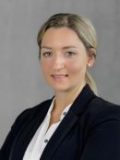Motivation
Fluid dynamic characteristics have direct influence on the quality of the weld and therefore on the formation of solidification cracks. A deep understanding of the laser welding process and, in particular, a precise knowledge of the thermo-fluid dynamic solidification conditions are indispensable in the study of crack initiation. Process simulations with high spatial resolution make an important contribution to the representation of causalities between process parameters and solidification-relevant properties. Experience shows that, due to the complexity of the subject, such simulations require unacceptably long computing times with conventional software. The cooperation of computer science and production engineering enables the implementation of generated process knowledge in a high-performance simulation framework to perform detailed process simulations with high temporal and spatial resolution.
Objective
The aim of Subproject 2 (SP2) is to investigate the relationship between process parameters and solidification relevant properties such as the local temperature, the local temperature gradient and the local chemical composition at the solidification front during laser welding. Relating to the resolidification area of the melt pool, the influence of process parameters on shape and spatial characteristics of this area, the so-called mushy zone, will be investigated. Moreover, experiments will be used to examine if breaking or detaching dendrites appear, which act as condensation nuclei and thus influence the further progress of solidification.

Work plan
In the course of SP2, preliminary melt pool simulations will initially be carried out using the simulation model developed at the Chair of Photonic Technologies in OpenFOAM. The data obtained will serve as input parameters for the simulative investigations planned in the other subprojects. In close cooperation with sub-project 3, an efficient, highly scalable and sustainable exascale simulation framework for the laser beam welding process will be jointly developed to investigate the issues described. The modelling of the physics underlying the process and the validation required to create this high-performance framework will be carried out as part of this sub-project. To validate the model, experimental findings on the process dynamics and the resulting temperature data are used. In order to gain a more precise understanding of the solidification processes, in situ measurements of the mushy zone are also required. For this purpose, the solidification processes in the material are analysed with the aid of high-energy synchrotron radiation.
Sub-project management
Prof. Dr.-Ing. Michael Schmidt
Friedrich-Alexander-Universität Erlangen-Nürnberg (FAU)
Institute of Photonic Technologies (LPT)
Sub-project researcher
Carola Forster, M.Sc.
Friedrich-Alexander-Universität Erlangen-Nürnberg (FAU)
Institute of Photonic Technologies (LPT)

